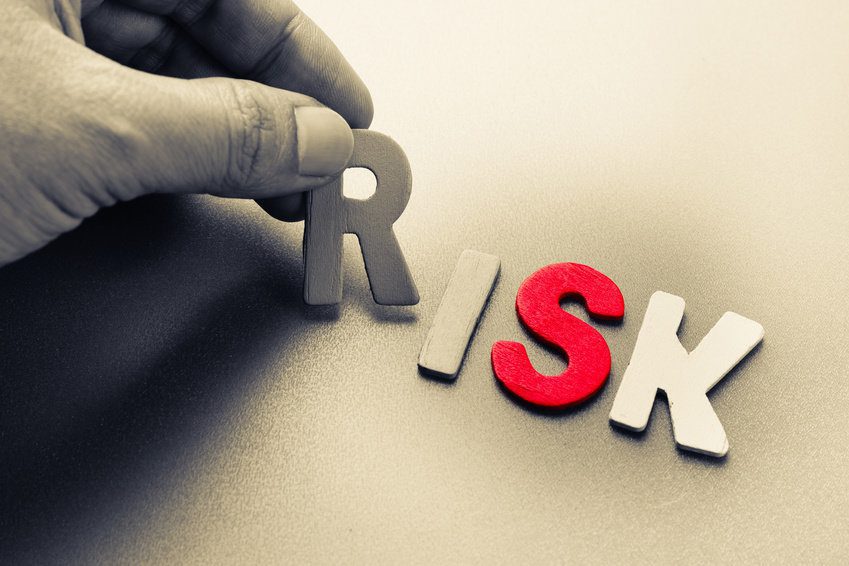
Every exchange of value-bearing goods presents a degree of risk to both parties. One of them might attempt to deceive the other by presenting his or her goods as being of a value higher than they are. The other party will try to match that value, in actuality paying more than what the goods were worth. One party was actively deceived, while the other profited. This was conscious deceit. The Foreign Exchange market, however, does not deceive – it only refuses to meet expectations. By doing so, it can nevertheless cause great losses to traders.
Operating on the Foreign Exchange market starts with the acceptance of its inherent instability. Always shifting in value, currencies, and pairs of currencies might sharply drop or rise in a relatively short period. While this can greatly enrich the skilled and informed trader, it leaves most others with a position that they paid too much for and which is now worth a lot less.
Risk Management
Risk management in the Forex market is essentially a strategy through which losses are kept at a controlled level. Trading without a risk management strategy in place is effectively no different from gambling. Like a roulette spin, it can leave the trader without his financial assets fast and without warning. Moreover, he will not have learned anything more about the act of trading – except that he needs a risk management strategy.
A whole array of financial tools, methods and indicators can be used in order to minimize the risk of operating in the Foreign exchange market. No different from some investing strategies developed by funds in order to bring profit to their clients, Forex risk management strategies look to maximize the potential of “investments” made in the ups and downs of currencies.
The market has a mind of its own. Amassing information and planning according to it is no guarantee of success. Trading without risk management becomes not only gambling but mad gambling. Any ray of success is lost in the vast space of losing trades and bad calls. For that reason, losses must be accepted before any market action.
The Rules of Managing Risk
The first and foremost method implied by the rules of risk management pertains to gathering knowledge. While fundamental and technical analysis can provide the statistical and historical information regarding a certain part of the Forex market, psychological factors have also to be taken into consideration.
Speculating currency, not unlike investing, is prone to waves of panic. This can even lead to panic-maintained periods of crisis, adding to the risk.
The Tools
Various tools and methods can be used in order to limit losses in the Forex market.
Technical analysis
Predicting possible trends in the market is not only profitable but also the supreme risk management strategy. Even if only partly correct, a solid prediction based on the comparison between charts of present and past market action, in other words, technical analysis, functions as a roadmap away from risk and towards profit.
Indicators are the essential part of any technical analysis. The RSI indicator is one of the leading tools used by traders for identifying trends. It signals when a certain currency has been oversold or overbought, therefore making clear when the price has fallen or risen.
Stop-loss orders
A stop-loss is an order placed with the broker to sell securities when they reach a certain price level. They are specifically designed to limit losses, and they can be used for any time frame. Stop-losses are particularly useful as they offer a high degree of safety. However, their fulfillment is not guaranteed in certain situations such as big changes in price.
Take-profit orders
The counterpart of stop-losses, the take-profit order represents another method of planning market actions ahead. The order specifies the exact price level at which the trader wants to sell – and therefore “take profit.” While stop-losses eliminate the risk of the price falling too much, take-profit points lock profits in the event of upward trends.
Together, these two orders eliminate the emotions that go with either losing or winning. Take-profit stops the trader while he or she is ahead; stop-loss does so in the case of losing money. As such, risk is minimized not only through keeping losses low, but also by lowering the number of times a position is given up needlessly.
Risk-to-reward ratio
One cannot limit him or herself to trading small amounts and looking for small gains every day on the market. Especially once stop-loss and take-profit orders are in place, a certain degree of risk must be allowed for the trade to be profitable. However, a kind of psychological stop-loss can be instituted here as well, in the form of the risk-to-reward ratio.
Risking 1 dollar for every 2 dollars sought is a sound strategy that minimizes risk while at the same time allowing for significant gains to be made. Stops and limits can be used to enforce a risk/reward ratio of 1-to-1 or 1-to-2. This method acknowledges the unpredictability of the market and accounts for it fully. In calculating the expected reward, a trader should take into account market volatility and longer-term moving averages. If the price is not moving too much, stop-loss and take-profit points cannot be too wide. Among other methods, using correct lot sizes and tracking overall exposure are also important practices toward minimizing losses.
Trading capital
In the end, a professional trader must be ready to lose the entire sum placed in a trade. For that reason, losses should always be calculated as a small percentage of the total available trading capital. This allows the trader to be wrong many times without having to wipe his account clean. It seems obvious, but not going all in on a single trade (or bet) is vital.
Risks and Gains
Trading, exchanging, purchasing, selling, even the barter that occurred before the adoption of a monetarized economy, all presented risk. Throughout history, those who engaged in the abovementioned activities found ways to lessen the risk. Constant income followed and business flourished. While stability is commendable, risk should never be fully eliminated from the market. Doing so would affect the very core of the free exchange. Instead, risk management strategies – some more successful than others – allow for trade to go unimpaired while keeping serious dangers at bay.



































